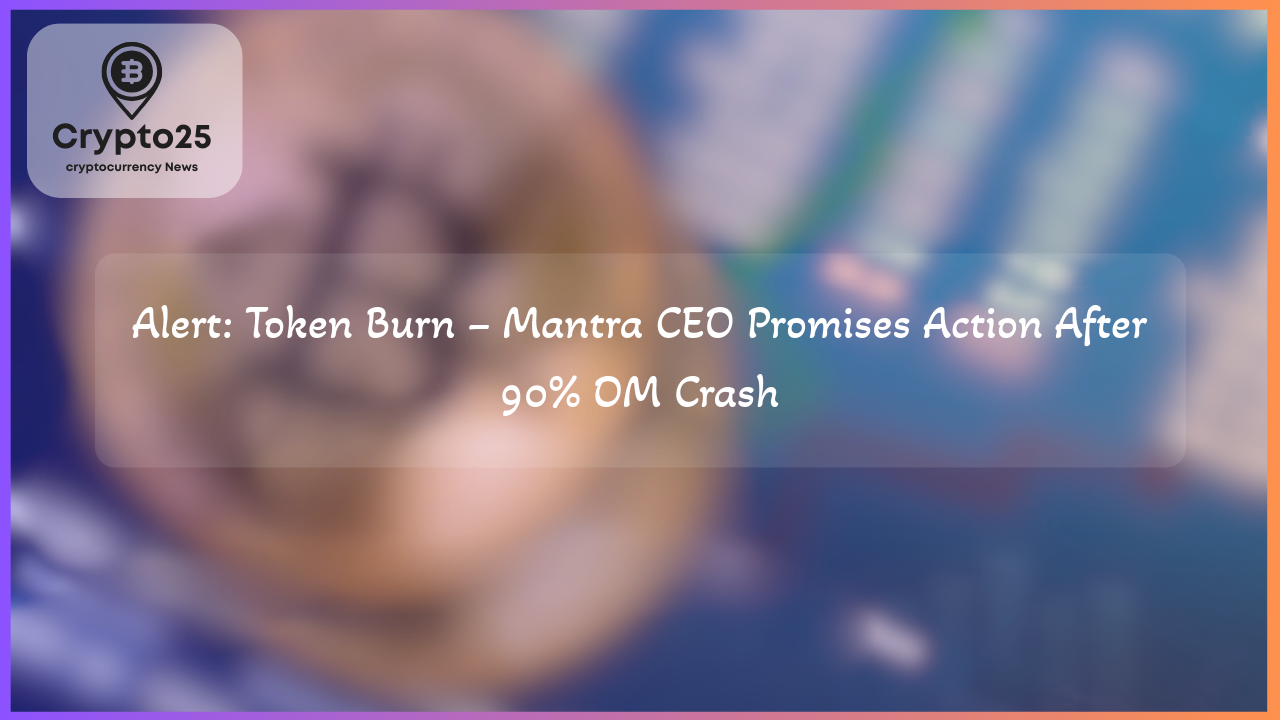
The crypto sphere witnessed a dramatic turn of events as John Patrick Mullin, co-founder and CEO of Mantra, vowed to burn all his team-allocated OM tokens to restore trust in the ecosystem. This announcement follows a steep plunge in the value of Mantra’s OM token, which dropped by 90% within an hour. Here’s an in-depth look into the unfolding of events surrounding Mantra and its OM token.
## Mantra CEO Commits to Token Burn Amid Controversy
The decision by John Patrick Mullin to burn his team-allocated tokens stems from growing concerns over the sustainability of the OM token. Following its sharp decline in value on Sunday, Mullin took to Twitter to announce his plans, stating that the move aims to rebuild confidence among the community and investors. The tokens, set to begin vesting in April 2027, will no longer be a part of his personal portfolio. Mullin also hinted at a broader burning initiative, targeting other portions of the OM token supply.
This bold step comes amidst mounting criticism. Mullin emphasized that this decision is his attempt to demonstrate accountability, stating, “I’m planning to burn all of my team tokens, and when we turn it around, the community and investors can decide if I have earned it back.” Other team members have reportedly lent support to this plan, underlining the team’s commitment to restoring Mantra’s reputation and safeguarding its future amid turbulent times.
## Understanding the OM Token Crash
Last Sunday’s crash saw the OM token plummet from $6 to under $0.40 within a matter of an hour, erasing billions in market value. According to CoinGecko metrics, OM, which was previously ranked as the 23rd largest cryptocurrency by market capitalization, suffered a catastrophic drop from $6.46 billion to merely $740 million in market cap. The token’s steep loss was attributed to what Mantra’s team described as “reckless liquidations” on a major centralized exchange.
Despite the crisis, Mantra released a statement asserting that the project had no direct involvement in the crash. Mullin further clarified during an interview with prominent cryptocurrency investigator Coffeezilla that neither he nor the team engaged in any liquidation or selling of OM tokens. He denied any leveraged trading practices from the organization and suggested that substantial token holdings from other individuals or entities might have been behind the cascading liquidations.
The project, which operates as a Layer-1 blockchain focused on tokenizing real-world assets, aims to merge blockchain technology with regulatory-friendly frameworks. High-profile collaborations with entities like Google Cloud and DAMAC Group have bolstered their legitimacy. However, incidents like the recent token crash underscore the volatility of crypto markets despite backing from esteemed partners.
## Allegations of Market Manipulation and Strategic Buybacks
While addressing the crisis, Mullin acknowledged executing over-the-counter (OTC) trades amounting to $20 to $30 million. These funds were reportedly allocated toward market stabilization buybacks valued between $5 to $10 million. Coffeezilla, however, pointed to these actions as evidence of price manipulation. Mullin rebutted the allegations, describing these buybacks as precautionary actions aimed at mitigating the effects of low liquidity rather than inflating the asset price artificially.
“This is not a buyback to pump prices but rather to provide market support during low-liquidity phases,” Mullin asserted. He elaborated that these steps were discretionary and aligned with maintaining a “healthy market ecosystem.” Contrary to public skepticism, the token saw a relatively modest appreciation of 58% since its launch, indicating no intentional price inflation. His comments reflect the complexity of deploying buyback strategies within a market as unpredictable as cryptocurrencies.
Nonetheless, critics remain vocal about the project’s reliance on these OTC transactions, flagging them as potentially inflating token demand artificially. Transparency regarding such practices continues to be a recurrent request from the crypto community at large.
## The Road Ahead for Mantra and the OM Token
Mantra’s tumultuous week shines a light on the critical need for accountability and transparency in the decentralized finance space. Mullin’s commitment to a token burn program may serve as a pivotal moment in repairing the project’s tarnished reputation. Additionally, aligning operations with greater community involvement and minimizing trust deficits will be vital for the project’s resurgence. These steps are evident of Mantra’s larger strategy to recalibrate following adversity.
| Title | Details |
|---|---|
| Market Cap Before Crash | $6.46 Billion |
| Market Cap After Crash | $740 Million |
| Token Price Before | $6.00 |
| Token Price After | $0.40 |
As the crypto industry grapples with events like this, transparency and trust remain key pillars for surviving the challenges posed by an increasingly watchful community. For now, all eyes will be on Mantra’s next moves to restore its credibility and re-establish the stability of the OM token.
